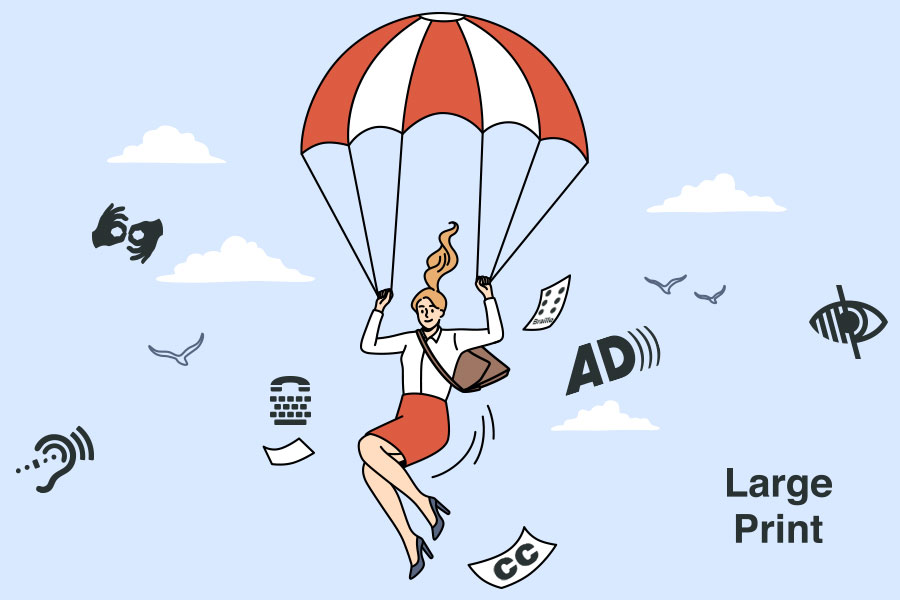
Digital Accessibility Viewpoint: Falling into the World of Accessibility
Is it just me, or are impactful career changes often discovered on a whim? This has been my journey. During my undergraduate years, I fell into a Training and Development internship and entry-level job. From there, I fell into eLearning development and subsequently into an Instructional Design role at the Software Engineering Institute (SEI). And today, I support both a design and course administration team, with a concentrated focus on accessibility analysis and implementation.
So, how did I get here?
Like every other role I seemingly “fell” into before, my accessibility journey started with a request. My supervisor asked me to become more familiar with accessible design practices. (Fortunately, my team was already implementing helpful practices, like scrolling captions.) But as we know, accessibility is more than the eye can see. I started to explore the field on my own. I attended free webinars, scoured the internet, and attended workshops presented by FocusU and CMU’s Disability Resources office.
Specifically, one FocusU session stuck with me. The class was given a demo of how a non-accessible website functions for a student with limited vision. It was humbling. It reminded me of when my smartphone broke. Every button was unusable, and I couldn’t make phone calls, send texts, or even access my work computer. I was reminded how unacceptable it was to deny digital access in a digital world.
During this time, I was also tasked with retrofitting a project to meet higher accessible standards. It was apparent. I know I could’ve saved hours if other stakeholders were more invested and aware of accessible needs.
Now I had a new mission. Being well-versed in accessible knowledge wasn’t going to be enough. So, I kept seeking information, asking questions, and gobbling up opportunities that came my way. I started to write accessible process documentation and advocate for its importance. Additionally, I started implementing new accessible practices in my work.
While my team was supportive, sometimes I felt like I was on an accessible island.
Fortunately, I found an intimate CMU community that was equally passionate to learn and grow in the field. Together, many of us studied for and passed the Certified Professionals in Accessibility Core Competencies (CPACC) exam from the International Association of Accessibility Professionals (IAAP). Basking in our victory and new credentials, we’re using our knowledge to improve department processes and accessibility awareness across campus.
And for me, maintaining accessible practices is now in my job description. But like many things, successful accessibility implementation takes a village. I’m now situated to guide other teams and departments on their accessibility journeys and for that, I’m so grateful. I’m so grateful I fell into another wonderful opportunity.
I hope others will feel the same someday.
By Rebekah N. Sedwick
Educational Services Facilitator, Transition Services
Software Engineering Institute, Carnegie Mellon University